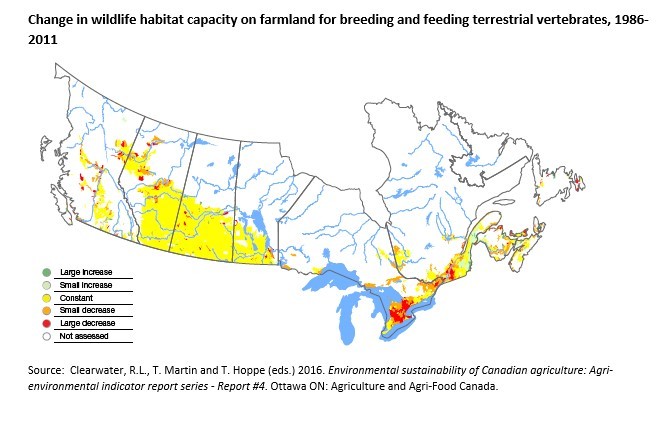Biodiversity and the Canadian Field Print Initiative
November 10, 2016

The Canadian Field Print Initiative (CFPI) recently held a Biodiversity Indicator Workshop in Ottawa. This workshop brought together scientists and modellers based in NGOs, governments and sustainability initiatives. An expert opinion process was followed to develop consensus on an optimal approach to developing a CFPI biodiversity indicator for Canadian crop production.
Biodiversity is an important element of sustainability, and information on farm practices to enhance biodiversity is widely sought by food companies and sustainability initiatives. Ultimately, this is in response to demand from consumers for information on the sustainable production of foods they purchase. Biodiversity of crop production is a complex subject, encompassing biotic variation at multiple levels:
- Genetic diversity – the genetic variability within a species
- Species diversity – the number of different species present, and their population sizes
- Ecosystem or habitat diversity – the variation in groupings of species and their habitats across space
As a result, it is relatively difficult to devise meaningful measures of biodiversity when compared to other sustainability indicators applied to crop production (such as soil loss, greenhouse gas emissions).
At the November CFPI workshop, much of the discussion focused on Agriculture and Agri-Food Canada’s Wildlife Habitat Capacity on Farmland (WHCF) Indicator. Already developed to reflect biodiversity trends in the context of Canada’s farmland, the WHCF Indicator embodies data and modelling with strong potential to provide the basis of CFPI biodiversity indicators, at both field level and macro level.
For more information on CFPI indicators, contact Serecon’s Angela Pearson at (780) 448-7447 or apearson@serecon.ca